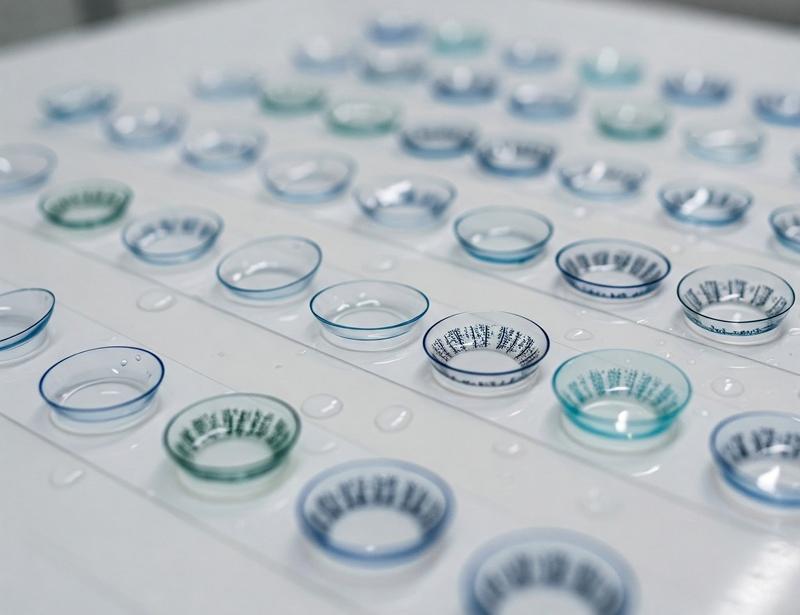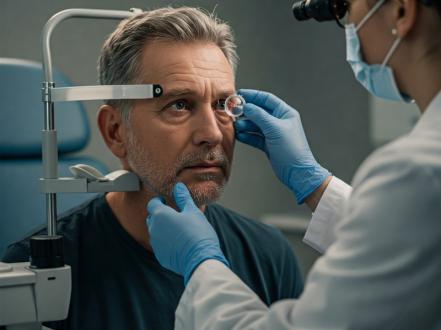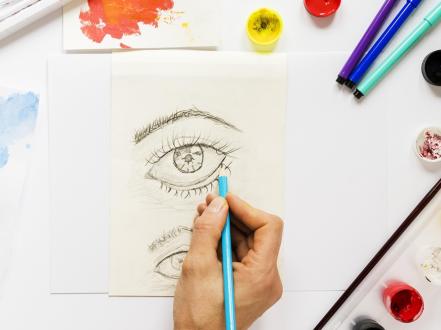Recent research into eye care has shown the increasing trend in contact lens popularity as a method of vision correction. With advancements in lens technology, patients are now being offered more comfortable and convenient alternatives than ever before, from daily wear through to multifocal. However, what many fail to realize is that safe lens wear requires more than a standard eye test.
In order for lenses to function well with your individual eye shape and safeguard your eye health, a specific test referred to as a contact lens exam is required. While a routine vision test doesn't, this test assesses how lenses interact with the surface of your eye, tests for dryness or comfort issues, and verifies the right type of lens for your everyday life and vision needs.
Whether you’re a first-time wearer or a returning user, understanding the details of this exam can mean the difference between long-term comfort and persistent irritation.
What Is a Contact Lens Exam?
A contact lens eye exam is a thorough, individualized, detailed procedure to determine if your eyes are suitable for lenses and which type of lenses will benefit you the most. This is generally performed in conjunction with a general vision exam, but is more involved than a typical comprehensive eye exam.
This is how it differs:
- General Eye Health Check. Even before lenses are mentioned, your eye doctor will perform a full ocular health checkup. This includes checking for any signs of infection, corneal issues, or dry eye syndrome-like conditions that may hinder lens wear. This first step ensures that no underlying condition will be worsened by lens wear.
- Tear Film Evaluation. A key step in the process, the tear film evaluation determines the quality and quantity of your tears. Inadequate tear production can result in discomfort or even corneal damage in the long term. Your eye doctor may perform a Schirmer's test or dye-based imaging to assess tear behavior on the surface of the eye.
- Corneal Measurements. Your cornea is shaped and curved individually, and the individuality influences how a lens will fit. A keratometer or corneal topographer will be utilized to measure your cornea's surface so that a lens size and curvature can be calculated that will sit comfortably on your eye without shifting around too much or pressing down.
- Contact Lens Fitting. In this, a "trial" or diagnostic lens is placed on your eye to observe actual behavior in real time. Contact lens fitting allows the doctor to observe lens movement, position, and comfort. Adjustments can be made on the spot or during a series of visits, depending on the acceptability of the lens to your eye.
- Trial Lenses and Comfort Testing. You will usually be sent home with trial lenses fitted to your requirements. You wear them for a few days and come back in. If any discomfort, cloudiness, or irritation is noted, your doctor will alter lens parameters or material if required.
Such an exam is pivotal for trying out how lenses move dynamically with your tear film and cornea. A proper eye doctor alone is trained and equipped to perform this safely and efficiently.
Routine Eye Exams vs. Contact Lens Exams
One of the most common myths is that a routine eye checkup does everything. It doesn't.
A comprehensive eye test checks your eyesight and overall ocular well-being. It screens for:
- Refractive errors (like myopia, hyperopia, or astigmatism).
- Eye disease, such as glaucoma or macular degeneration.
- Overall eye functioning and coordination.
This is needed, but it doesn't check how lenses sit and feel on your eyes.
A contact lens exam, however, includes all of the above but ventures into specialized areas:
- Lens-to-eye compatibility.
- Corneal response to lens wearing.
- Moisture retention and oxygen permeability.
- Real-life trial fitting and comfort tests.
In short, contact lens examinations are not an option for lens wearers — they're a medical necessity.
Contact Lens Fitting and Prescription
Whereas eyeglasses rest outside your eye, contact lenses sit on the corneal surface. That's why fitting is crucial — a misfit lens will cause blurry vision, eye irritation, and even corneal abrasions.
Here's what happens during the fitting process:
- Corneal Curvature and Diameter Assessment. Equipment like keratometers and topographers helps in determining the lens base curve and size.
- Tear Film Stability Check. Repeat or continuation of the tear film analysis, as non-stable tears will affect comfort with the lenses.
- Lifestyle Questions. Your eye care specialist will ask lifestyle questions. Do you work on a computer and television screens for hours? Do you swim, apply makeup, or travel a great deal? Every answer helps lens type selection.
Once the parameters are found to be optimal, the doctor provides a contact lens prescription. It is not like a glasses prescription and includes information such as:
- Lens base curve and diameter.
- Brand or material recommendation.
- Power for each eye.
- Wear schedule (every day, every other week, monthly).
Standard soft lenses work well for most. For some, especially patients with keratoconus, extreme dryness, or post-surgical corneas, specialty lenses such as scleral or hybrid lenses may be required.
The Different Types of Contact Lenses
Not all contact lenses are created equal. With improvements in materials, you now have an incredible selection of lens types available. The right one depends on your eyes, your optical needs, and what you do.
The most common categories are:
- Soft Lenses: These are the most popular and typically recommended to new patients. They're easy to get used to and can be obtained as daily, weekly, or monthly lenses.
- Rigid Gas Permeable (RGP) Lenses: These provide clear vision and fit those who have astigmatism or abnormally-shaped corneas. But it takes more time to get adjusted.
- Toric Lenses: Especially designed for astigmatism, these lenses have different powers in different meridians of the lens.
- Multifocal Lenses: Presbyopes (age-related loss of ability to focus up close) can use multifocal lenses with multiple zones of correction.
- Daily vs. Monthly: Dailies offer maximum convenience and hygiene but are more costly, whereas monthlies are economical but require careful cleaning.
Selecting between the different types of contact lenses is more than a matter of vision acuity. The tear film test, corneal curvature, and daily activities all have an impact on what kind will be most suitable for you. Your doctor will consider your personal and environmental factors, such as screen time, pollution exposure, or allergens, when prescribing a type of lens.
Conclusion
Your eyes are as unique as your fingerprints — and so is your lens solution. A proper contact lens exam is not a routine. It's an in-depth, step-by-step process that ensures comfort, safety, and crystal-clear vision in the long run.
By prioritizing your eye health through a professional contact lens eye exam, you’re investing in your quality of life and preventing avoidable complications. From the precision of a personalized prescription to the trial-fitting process, each step is guided by your eye doctor’s expertise and your individual needs.
As our understanding of vision science grows and new cataract types and eye afflictions become apparent, staying ahead of the game with expert care will always be your best defense. So always stay informed about your eyes' well-being. Remember: the brighter your knowledge, the brighter your sight.






